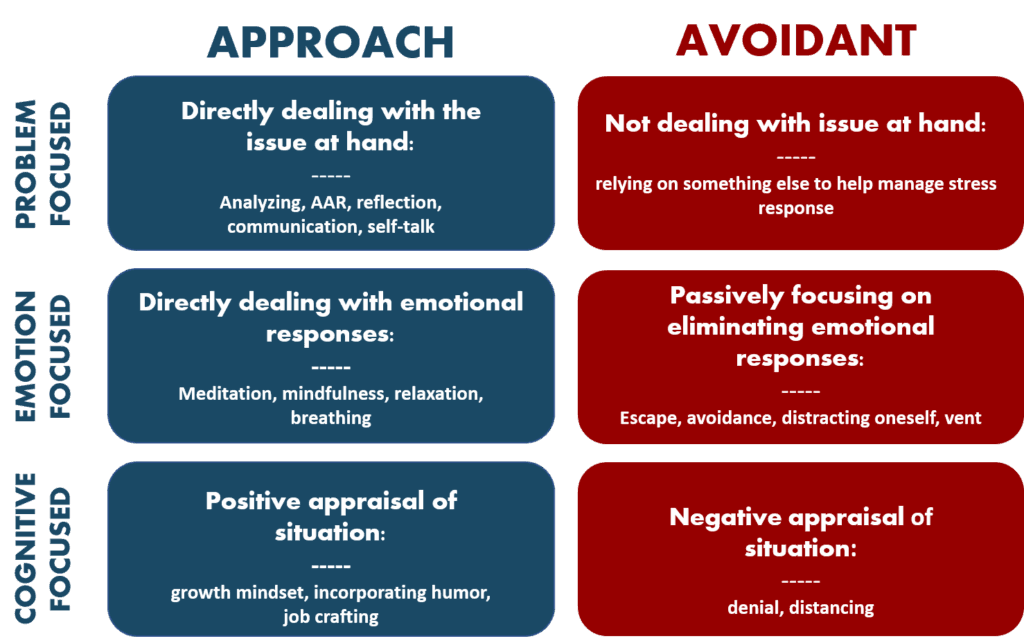Avoidance-Based Coping is a form of procrastinating, numbing out, or shutting down and it can feel like the only option when you’re overwhelmed. But avoiding problems often makes them worse. The good news? Small, intentional steps can help you break the cycle. Below is a step-by-step guide to shifting away from avoidance, even when you’re just trying to survive.

Step 1: Acknowledge That Avoidance Is a Survival Tactic, Not a Flaw
Avoidance-based coping is your brain’s attempt to shield you from distress. When overwhelmed, your nervous system defaults to short-term escapes rather than long-term solutions. The first step in overcoming avoidance-based coping is acknowledging its role without self-judgment.
Let’s Practice:
- Notice when you’re avoiding something and name it without criticism.
- Remind yourself: “This is my brain trying to keep me safe.”
- Write down one thing you’ve been avoiding and why it feels overwhelming.
Step 2: Start with the Smallest Possible Step
Avoidance-based thinking thrives on the belief that tasks are too big to handle. Break them into tiny, manageable pieces. If replying to an email feels impossible, just open it. If cleaning your room is paralyzing, pick up one sock. These micro-actions build momentum without triggering overwhelm.
What You Can Do Now:
- Choose one avoided task and break it into a 2-minute version.
- Set a timer for 5 minutes and work on that task with no pressure to finish.
- Celebrate completing the small step, even if it feels insignificant.
Step 3: Use Your Body to Regulate Your Nervous System
When stuck in an avoidance behavior loop, logic often fails because your body is in fight-flight-freeze mode. Calming your physiology comes first. Grounding techniques and movement can help reset your nervous system, making it easier to think clearly.
The 5-4-3-2-1 Method
- Try the 5-4-3-2-1 method: Name 5 things you see, 4 you feel, 3 you hear, 2 you smell, and 1 you taste.
- Shake out your limbs for 30 seconds to release tension.
- Take slow, deep breaths. Then inhale for 4 seconds, hold for 4, exhale for 4.
Step 4: Challenge Avoidance-Based Coping Mechanisms with “Opposite Action”
Avoidance tells you to retreat, but growth happens when you do the opposite—in small doses. If you’re ignoring a difficult conversation, send a short text. If you’re procrastinating on a project, write one sentence. This weakens avoidance’s grip over time.
Always Challenge Avoidance-Based Coping Mechanisms:
- Ask: “What’s the smallest step I can take toward this?”
- Do that step immediately, before your brain resists.
- Notice how it feels afterward. Often times, the dread was worse than the task.
Step 5: Create External Accountability
Isolation fuels avoidance. Sharing your goals with someone else, even casually, makes them feel more real. If you’re avoiding work, tell a friend: “I’ll message you when I start.” If chores feel impossible, invite a friend over to sit with you while you tidy.
Accountability is Everything:
- Text a friend one thing you’ll do today.
- Use “body doubling” (working alongside someone, even virtually).
- Join an online community (like r/NonZeroDay) for motivation.
Step 6: Examine the Fear Beneath the Avoidance
Avoidance is usually rooted in fear. This can appear like a fear of failure, pain, or judgment. Ask yourself: “What am I really afraid will happen?” Then, challenge that fear with reality. For example: “If I send this email, the worst outcome is a ‘no’. Which is better than never trying.”
Let’s Try Identifying that Fear:
- Write down the fear behind your avoidance.
- Counter it with: “Is this fear absolutely certain to happen?”
- Remind yourself that avoidance often causes more suffering than action.
Step 7: Reward Approach, Not Avoidance
Train your brain to associate action with relief, not dread. After completing a small step, do something enjoyable. Like taking a walk, a favorite song, or a treat. This reinforces positive behavior instead of reinforcing avoidance loops.
Actionable Tasks:
- Pair tasks with rewards: “After I reply to this email, I’ll have coffee.”
- Acknowledge your effort: “I did this even though it was hard.”
- Notice how taking action feels better than lingering in avoidance.
Remember: Progress Over Perfection!
Avoidance doesn’t disappear overnight, but each small step weakens its hold. Be patient with yourself. Survival mode isn’t forever because every action you take rebuilds your sense of control.
If avoidance feels unmanageable, reach out to a professional therapist with experience in CBT or trauma-focused approaches or explore workbooks like the Just Stop Dating Challenging Avoidance Coping Mechanism Workbook. You’re not alone in this struggle. It took me ages to write this article dealing with avoidance-based coping that truly challenges the day-to-day work. Let me know down below if these tips helped or email our team.
Selected Publications
- Genomic evidence for behavioral adaptation of herding dogsPublished: 2025-04-30 Author(s): Hankyeol Jeong, Elaine A. Ostrander, Jaemin Kim
- Adaptable cavity exploration: Bioinspired vibration-propelled PufferFace Robot with a morphable bodyPublished: 2025-04-30 Author(s): Linh Viet Nguyen, Hansoul Kim, Khoi Thanh Nguyen, Farshid Alambeigi, Van Anh Ho
- Pyrite stimulates the growth and sulfur oxidation capacity of anoxygenic phototrophic sulfur bacteria in euxinic environmentsPublished: 2025-04-18 Author(s): Runjie Li, Xiaolei Liu, Geng Wu, Gaoyuan Li, Jing-Hua Chen, Hongchen Jiang, Hailiang Dong
- Sticking the landing: Insect-inspired strategies for safely landing flapping-wing aerial microrobotsPublished: 2025-04-16 Author(s): Nak-seung P. Hyun, Christian M. Chan, Alyssa M. Hernandez, Robert J. Wood
- PseudoSorter: A self-supervised spike sorting approach applied to reveal Tau-induced reductions in neuronal activityPublished: 2025-03-14 Author(s): Marius Brockhoff, Jakob Träuble, Sagnik Middya, Tanja Fuchsberger, Ana Fernandez-Villegas, Amberley Stephens, Miranda Robbins, Wenyue Dai, Belquis Haider, Sulay Vora, Nino F. Läubli, Clemens F. Kaminski, George G. Malliaras, Ole Paulsen, Gabriele S. Kaminski Schierle











